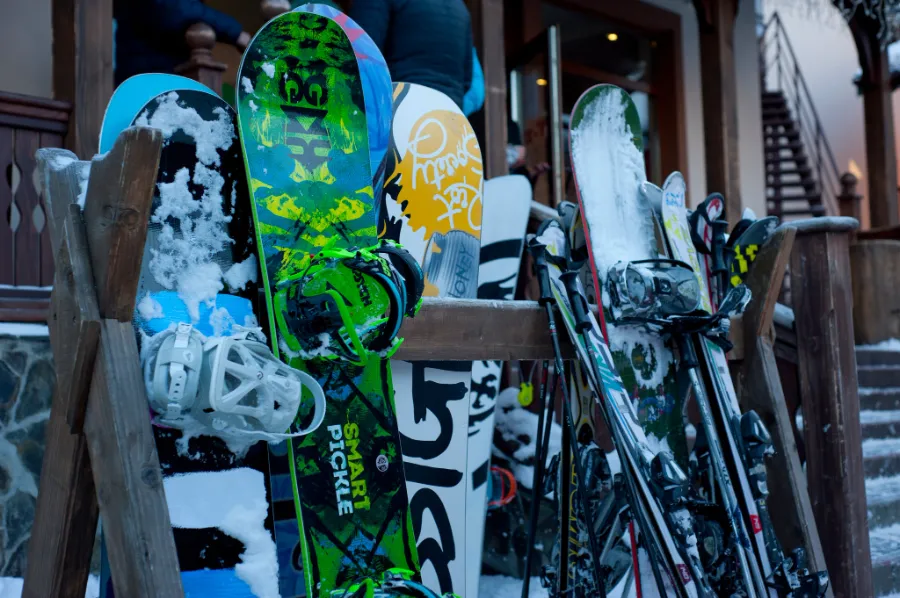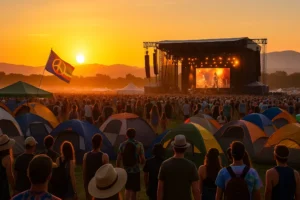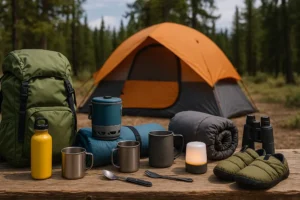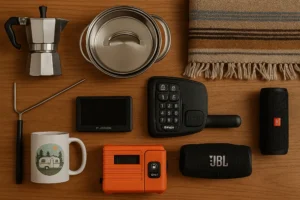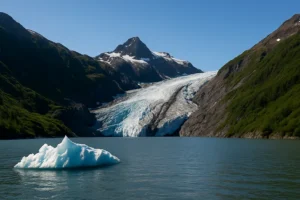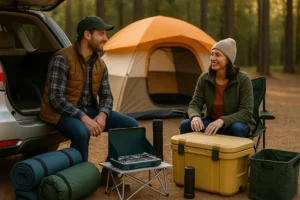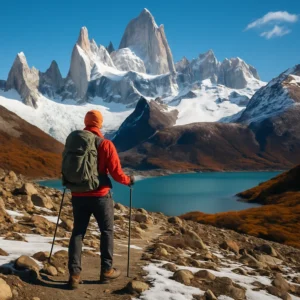Ski and snowboard trips aren’t just about chasing powder or carving perfect lines. They come with decisions. One of the biggest? Whether to rent or buy your gear.
Let’s be honest—between lift passes, accommodations, food, and après-ski fun, the cost of a mountain trip adds up fast. So, when it comes to ski and snowboard equipment, making the right call can save you hundreds. Or cost you. But it’s not just about money. It’s about comfort, performance, and ultimately, how much fun you have out there.
In this guide, we’re breaking it all down. Whether you’re a first-timer or a seasoned shredder, you’ll get straight talk—no fluff—on the pros and cons of renting vs buying ski and snowboard gear. Let’s get into it.
Rental Gear: The Smart Start for New Riders
Renting makes sense for one big reason: low commitment. If you’re new to skiing or snowboarding, you probably don’t even know what gear you like yet—and that’s okay.
Why rent?
- Affordability (short-term): Rentals are much cheaper up front. A weekend package—boots, skis or board, poles, and helmet—can run you $40–$100 per day depending on location.
- Convenience: No need to haul bulky gear through airports or cram it into your car. Most resorts and rental shops are ready with whatever you need, sized and tuned.
- Flexibility: Want to try out different styles or brands? Rentals let you switch between a freestyle board one day and an all-mountain ski setup the next.
But here’s the flip side.
- Rental gear is usually basic. It’s designed for general use, not high performance.
- Fit can be hit-or-miss. Ill-fitting boots = sore feet and a miserable day on the slopes.
- Availability during peak season can get tight. Showing up late on a holiday weekend? Good luck finding the right size.
Who should rent:
- Beginners testing the waters
- Travelers who only hit the slopes once a year
- Families with growing kids (gear gets outgrown fast)
- People flying to their destination who want to pack light
Pro tip: Rent your ski and snowboard gear online ahead of time. Many shops offer a discount and guarantee your size.
Buying Gear: An Investment That Pays Off (Eventually)
Let’s flip the goggles. Buying your gear gives you freedom. Familiarity. And a real sense of ownership.
Why buy?
- Perfect fit: Your boots mold to your feet. Your bindings are set just how you like them. No guessing, no compromises.
- Performance: Higher-quality gear makes a difference. You’ll get more control, better turns, and a smoother ride overall.
- Long-term savings: If you ski or snowboard more than 10–12 days a season, owning can quickly become the cheaper option.
- Customization: Want carbon fiber poles? Or a board with a specific camber? Go wild. Your gear reflects your style.
But there are costs.
- The initial price tag is steep. A full setup can run $800–$2,000+ depending on brand and features.
- Maintenance is on you. That means tuning edges, waxing bases, and checking for wear.
- You need storage space—and transportation can be a hassle, especially if you’re flying.
Who should buy:
- Intermediate to advanced skiers and boarders
- People who hit the slopes at least 7–10 days a year
- Riders who want consistency and better performance
- Anyone who loves geeking out over gear (you know who you are)
Pro tip: If you’re buying boots, go to a bootfitting specialist. Nothing ruins a day faster than painful feet—and good boots make all the difference.
The Hybrid Approach: Rent Some, Buy Some
Here’s the underrated option most people skip: a hybrid setup.
Let’s say you ski three weekends a year. You’re past the beginner stage, but not quite ready to commit to full ownership. Why not buy the gear that matters most—like boots or a helmet—and rent the rest?
Why it works:
- Boots and helmets: These are the most comfort-sensitive pieces of equipment. Owning them ensures a perfect fit and better hygiene (rental helmets = shared sweat).
- Skis or boards: Rent these to try out different models, lengths, or styles each trip.
- Bindings: If you own skis or a board, bindings are part of the deal. But if you’re renting those, you’re covered.
It’s all about striking the right balance. You don’t need to go all in or stay completely out.
Crunching the Numbers: Cost Comparison Over Time
Let’s take a closer look at the math.
Example 1: Beginner skier hitting the slopes 5 days a year
- Rental: ~$75/day = $375/year
- Buying: ~$1,200 for a full setup
- Break-even: After 16 days (3+ years)
Example 2: Snowboarder taking 10 trips a season
- Rental: ~$65/day = $650/year
- Buying: ~$1,000 setup
- Break-even: 1.5 seasons
Factor in resale value—good gear holds its value. Sell it later to recoup some cost.
Travel Considerations: Flying with Gear vs Renting On-Site
Airline baggage fees can be brutal. Most airlines treat skis and snowboards as oversized baggage, meaning $30–$75 each way. Some airlines (bless them) let you check gear as part of your normal baggage allowance. But it’s inconsistent.
Renting on-site wins if:
- You’re flying budget
- Your gear is bulky or old
- You’re not loyal to one type of terrain or snow condition
Buying and flying makes sense if:
- You love your setup
- You’re skiing powder, backcountry, or specific conditions that rentals don’t handle well
- You travel often enough that baggage fees even out
Kids and Teens: The Growth Factor
Here’s where things get tricky. Kids grow fast. What fits in November could be tight by February.
Renting for kids makes sense. Many shops offer season-long rental programs at a discount. Plus, some let you trade up sizes mid-season.
But what about teens? If they’ve stopped growing or are getting serious about the sport, investing in their own gear can build skill faster. Confidence comes from familiarity.
The Sustainability Angle: Rent to Reduce Waste
Let’s talk impact. Manufacturing gear has a footprint—materials, shipping, packaging. Renting keeps equipment in circulation longer and reduces production demand. If you’re environmentally conscious or just trying to consume less, renting can be the greener choice.
That said, buying high-quality gear and maintaining it well is also sustainable. Avoid fast-fashion-style gear. Invest once, use for years, and repair instead of replace.
Final Verdict: Rent or Buy?
There’s no one-size-fits-all answer. But here’s a simple decision tree:
Rent if you:
- Ski/snowboard fewer than 7 days per season
- Are still learning or improving
- Are traveling light or on a budget
- Have kids who grow fast
Buy if you:
- Ride regularly and value performance
- Know exactly what you want in gear
- Care about fit, comfort, and customization
- Don’t want to depend on availability
Hybrid works best when:
- You ski a few times a year but hate rental boots
- You travel often but want your own helmet or goggles
- You want a taste of both worlds before committing
Bottom Line
Your ski and snowboard experience shouldn’t be compromised by gear that doesn’t fit or perform. Whether you rent, buy, or blend both, the key is knowing what works for you. Make the choice that helps you stay focused on what really matters—ripping down that mountain with a huge grin on your face.
Happy riding.
FAQs: Renting vs Buying Ski and Snowboard Gear
Renting is cheaper short-term, especially if you only hit the slopes a few times a year. Buying becomes more cost-effective if you ski or snowboard frequently—typically after 10–12 days of use.
Start with boots and a helmet. These items have the most impact on comfort and hygiene, and owning them ensures a better fit than rentals.
Generally, yes. Rental gear is designed for durability and ease of use, not high performance. It may lack the responsiveness and features of personal equipment.
Many local shops offer season-long rentals, especially for kids. It’s a great option for families or intermediate riders who want convenience without full commitment.
It depends on the airline. Some charge oversized baggage fees, while others include gear in standard luggage—so compare costs before your trip.
Typically after 10–16 days on the slopes. Frequent riders often save money in the long run by owning their gear.
Renting reduces the demand for manufacturing new gear and keeps items in circulation longer. However, buying high-quality gear and maintaining it well is also a sustainable option.

